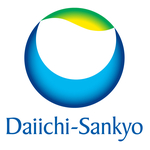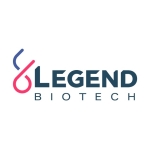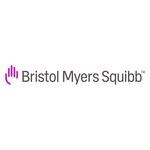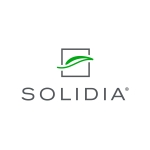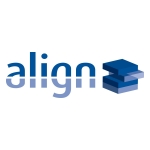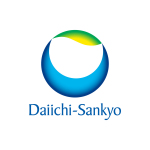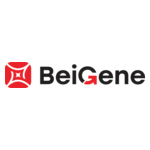- Data from a phase 1/2 trial in patients with several subtypes of HER3 expressing metastatic breast cancer featured as oral presentation at ASCO
- First presentation of phase 1 data from a cohort of patients with advanced NSCLC without EGFR mutations also highlighted in poster discussion session
TOKYO & MUNICH & BASKING RIDGE, N.J.–(BUSINESS WIRE)–New data from Daiichi Sankyo’s (TSE: 4568) patritumab deruxtecan (HER3-DXd) showed clinically meaningful and durable responses in two early-stage trials in previously treated patients with HER3 expressing metastatic breast cancer or advanced non-small cell lung cancer (NSCLC) without EGFR-activating mutations. These data will be presented during an oral presentation (Abstract #1002) and a poster discussion session (Abstract #9017) at the American Society of Clinical Oncology (#ASCO22) Annual Meeting.
Patritumab deruxtecan is a potential first-in-class HER3 directed antibody drug conjugate (ADC) discovered and being developed by Daiichi Sankyo.
Advanced breast and lung cancer are two of the leading causes of cancer-related death in the U.S. with five-year survival rates of 30% and 7%, respectively.1,2 New therapeutic approaches are needed to improve outcomes for these cancers and HER3 is a promising target for therapeutic development. HER3 is broadly expressed in these tumors and is associated with an increased incidence of metastases, reduced survival and is one of the mechanisms of resistance to standard of care treatment.3,4
“Results of these two trials of patritumab deruxtecan in patients with certain subtypes of advanced breast or lung cancer further support the potential of Daiichi Sankyo’s DXd antibody drug conjugate technology across different types of cancer,” said Gilles Gallant, BPharm, PhD, FOPQ, Senior Vice President, Global Head, Oncology Development, Oncology R&D, Daiichi Sankyo. “These data also reinforce the potential emerging role of targeting HER3 with an antibody drug conjugate to overcome resistance to standard of care treatment in patients with HER3 expressing metastatic breast cancer as well as in patients with advanced non-small cell lung cancer without EGFR activating mutations, which we plan to continue to explore in additional trials.”
HER3 Expressing Metastatic Breast Cancer Results
Pooled analysis from a three-part, first-in-human phase 1/2 trial evaluating patritumab deruxtecan (n=182) showed clinically meaningful and durable responses after a median follow-up of 31.9 months (range, 15-56) in patients with three different subtypes of HER3 expressing metastatic breast cancer, including HR positive/HER2 negative, triple negative and HER2 positive disease. Responses were seen across a broad range of HER3 expression.
A confirmed objective response rate (ORR) of 30.1% (95% CI: 21.8-39.4) was observed with patritumab deruxtecan in the cohort of 113 patients with HER3 high or HER3 low, HR positive/HER2 negative metastatic breast cancer, as assessed by blinded independent central review (BICR). Partial responses (PRs) were observed in 30.1% of patients and 50.4% of patients had a best overall response (BOR) of stable disease (SD). Median duration of response (DOR) was at 7.2 months (95% CI: 5.3-NE). Median progression-free survival (PFS) was 7.4 months (95% CI: 4.7-8.4) and median overall survival (OS) was 14.6 months (95% CI: 11.3-19.5).
In the cohort of 53 patients with HER3 high metastatic triple negative breast cancer (TNBC), an ORR of 22.6% (95% CI: 12.3-36.2) was observed with patritumab deruxtecan, as assessed by BICR. PRs were observed in 22.6% of patients and 56.6% of patients had a BOR of SD. Median DOR was 5.9 months (95% CI: 3.0-8.4). Median PFS was 5.5 months (95% CI: 3.9-6.8) and the median OS was 14.6 months (95% CI: 11.2-17.2).
An ORR of 42.9% (95% CI: 17.7-71.1) was observed with patritumab deruxtecan in the cohort of 14 patients with HER3 high, HER2 positive metastatic breast cancer, as assessed by BICR. PRs were observed in 42.9% of patients and 50.0% of patients had a BOR of SD. Median DOR was 8.3 months (95% CI: 2.8-26.4). Median PFS was 11.0 months (95% CI: 4.4-16.4) and median OS was at 19.5 months (95% CI: 12.2-NE).
“Significant unmet need still remains for the treatment of patients with metastatic breast cancer and new treatment strategies need to be continuously explored,” said Ian E. Krop, MD, PhD, Chief Clinical Research Officer, Associate Cancer Center Director for Clinical Research, Yale Cancer Center. “Results from this trial show that patritumab deruxtecan produces clinically meaningful and durable antitumor activity in patients and further study is warranted to further evaluate the efficacy and safety of this HER3 directed antibody drug conjugate across patients with HR positive/HER2 negative, HER2 positive and triple negative breast cancer.”
Pooled safety was analyzed for all patients (n=182) enrolled in the trial. Treatment-emergent adverse events (TEAEs) associated with treatment discontinuation was 9.9%. Treatment-related Grade ≥ 3 TEAEs occurred in 120 patients (65.9%) and included neutrophil count decrease, platelet count decrease, white blood cell count decrease, anemia, alanine aminotransferase increase, aspartate aminotransferase increase, decreased appetite, nausea, fatigue, diarrhea, malaise, stomatitis and vomiting. Overall, 12 patients (6.6%) had confirmed treatment-related interstitial lung disease (ILD) or pneumonitis as determined by an independent adjudication committee. Most ILD events were low-grade with three (1.6%) grade 1 and five (2.7%) grade 2 events; three grade 3 (1.6%) and one grade 5 (death) event occurred (0.5%).
Patients were heavily pre-treated, and those with HR positive/HER2 negative metastatic breast cancer had received a median of six (range, 2-13) prior lines of therapy in the advanced setting; patients with metastatic TNBC had received a median of two (range, 1-13) prior therapies; and patients with HER2 positive breast cancer had received a median of 5.5 (range, 2-11) prior therapies. Median treatment duration was 5.9 months (range, 0.7-30.6). As of the data cut-off on August 16, 2021, four patients remained on study treatment with patritumab deruxtecan.
Summary of Results of HER3 Expressing Breast Cancer Phase 1/2 Trial
|
Efficacy Measures |
HR positive/ HER2 negative HER3 high and HER3 low n=113 |
TNBC HER3 high n=53 |
HER2 positive HER3 high n=14 |
|
Confirmed ORR, % (95% CI)i |
30.1% (21.8-39.4) |
22.6% (12.3-36.2) |
42.9% (17.7-71.1) |
|
Confirmed BOR |
|||
|
PR, % (n) |
30.1% (34) |
22.6% (12) |
42.9% (6) |
|
SD, % (n) |
50.4% (57) |
56.6% (30) |
50.0% (7) |
|
PD, % (n) |
11.5% (13) |
17.0% (9) |
7.1% (1) |
|
NE, % (n) |
8.0% (9) |
3.8% (2) |
0% (0) |
|
DOR, median (95% CI), months |
7.2 months (5.3-Not Estimable) |
5.9 months (3.0-8.4) |
8.3 months (2.8-26.4) |
|
PFS, median (95% CI), months |
7.4 months (4.7-8.4) |
5.5 months (3.9-6.8) |
11.0 months (4.4-16.4) |
|
6-month PFS rate, % (95% CI) |
53.5% (43.4-62.6) |
38.2% (24.2-52.0) |
51.6% (22.1-74.8) |
|
OS, median (95% CI), months |
14.6 months (11.3-19.5) |
14.6 months (11.2-17.2) |
19.5 months (12.2-Not Estimable) |
BOR, best overall response; DOR, duration of response; HER, human epidermal growth factor receptor; HR, hormone receptor; ORR, objective response rate; OS, overall survival; PD, progressive disease; PFS, progression-free survival; PR, partial response; SD, stable disease; NE, not evaluable; TNBC, triple negative breast cancer
i 95% exact binomial confidence interval using Clopper-Pearson method
NSCLC Without Common EGFR-Activating Mutations Results
First preliminary results from one cohort of an ongoing phase 1 trial reported durable responses with patritumab deruxtecan after a median follow-up of 19.7 months (range, 13.8-29.2) in patients with locally advanced or metastatic NSCLC without most frequent EGFR activating mutations (EX19del, L858R, L861Q or G719X) or without identified driver genomic alterations.
An ORR of 28.6% (95% CI: 11.3-52.2), as assessed by BICR, was observed with patritumab deruxtecan in 21 patients with advanced NSCLC with identified driver genomic alterations other than EGFR activating mutations. Six patients had PRs and 10 patients had a best overall response of stable disease. Median DOR was 9.4 months (95% CI: 4.2-NE) and a disease control rate (DCR) of 76.2% (95% CI: 52.8-91.8) was observed. Median PFS was 10.8 months (95% CI: 2.8-16.0). Responses with patritumab deruxtecan were seen in patients with a broad range of driver genomic alterations, including KRAS/NRAS mutations and ALK fusions.
In patients with NSCLC without identified driver genomic alterations, an ORR of 26.9% (95% CI: 11.6-47.8) was observed with patritumab deruxtecan in 26 patients, as assessed by BICR. One patient had a complete response (CR), six had PRs and 12 patients had stable disease as a best overall response. Median DOR was 9.6 months (95% CI: 1.6-NE) and a DCR of 73.1% (95% CI: 52.2-88.4) was observed.
“Similar to previously reported results in patients with EGFR mutated non-small cell lung cancer, patritumab deruxtecan shows promising durable responses in patients with heavily pretreated advanced non-small cell lung cancer with or without driver genomic alterations,” said Conor E. Steuer, MD, Assistant Professor, Department of Hematology and Medical Oncology, Emory University School of Medicine. “Further research is warranted to further confirm whether targeting HER3 is an effective treatment strategy to overcome treatment resistance in these patients.”
Safety of patritumab deruxtecan seen in this cohort was consistent with that previously observed in patients with EGFR-mutated NSCLC. Treatment-related Grade ≥ 3 TEAEs occurred in 24 patients (51.1%) and included neutropenia, fatigue, thrombocytopenia, hypokalemia, anemia, leukopenia and pneumonia. Five patients (10.6%) had confirmed treatment-related ILD as determined by an independent adjudication committee. Most of these ILD events were low-grade with one grade 1 (2.1%) and four grade 2 (8.5%) events. As of data cut-off of January 28, 2022, five patients (10.6%) remained on treatment with patritumab deruxtecan.
About the Phase 1/2 Breast Cancer Trial
The global, open-label, three-part phase 1/2 trial is evaluating the safety and efficacy of patritumab deruxtecan in patients with HER3 expressing advanced/unresectable metastatic breast cancer who are refractory or intolerant to standard treatment, or for whom no standard treatment is available.
The dose escalation part of the trial is assessing the safety and tolerability of increasing doses of patritumab deruxtecan to determine the maximum tolerated dose. The dose finding part of the trial assessed the safety and efficacy of patritumab deruxtecan at selected dosing levels to determine the recommended dose for expansion. Patients in the dose escalation and dose finding parts of the trial must have received six or fewer prior chemotherapy regimens, at least two of which were administered for treatment of advanced/unresectable metastatic disease, and at least one prior chemotherapeutic regimen must have included a taxane, administered in the neoadjuvant, adjuvant or advanced setting.
The phase 2 part of the trial is evaluating the safety and efficacy of patritumab deruxtecan at the recommended dose for expansion in four different cohorts of patients with HER3 expressing and HER2 negative locally advanced or metastatic breast cancer, including HR positive and triple negative breast cancer. For more information, visit ClinicalTrials.gov.
About the Phase 1 Non-Small Cell Lung Cancer Trial
The global, multicenter, open label, two-part phase 1 trial is evaluating patritumab deruxtecan in previously treated patients with metastatic or unresectable NSCLC.
The dose escalation part of the trial is evaluating patients with EGFR-mutated disease either with progression on osimertinib or T790M-negative after progression on erlotinib, gefitinib or afatinib. The primary objective of this part of the trial was to assess the safety and tolerability of patritumab deruxtecan and determine the recommended dose for expansion (RDE).
The dose expansion part of the trial is evaluating patritumab deruxtecan at the RDE (5.6 mg/kg every three weeks) in three cohorts. Cohort 1 includes patients with locally advanced or metastatic EGFR-mutated NSCLC who experienced disease progression after taking one or more EGFR TKIs and one or more platinum-based chemotherapy regimens. Cohort 2 includes patients with squamous or non-squamous NSCLC without EGFR-activating mutations following platinum-based chemotherapy and following an anti-PD-1 or anti-PD-L1 antibody regimen. Cohort 3 includes patients with NSCLC with EGFR-activating mutations including any histology other than combined small cell and non-small cell lung cancer; patients in Cohort 3 are randomized 1:1 to receive the 5.6 mg/kg RDE regimen (Cohort 3a) or an escalating up-titration regimen of patritumab deruxtecan (Cohort 3b).
The primary objective of the dose expansion part of the trial is to assess efficacy of patritumab deruxtecan as measured by confirmed objective response rate (ORR) assessed by blinded independent central review. Secondary trial endpoints include investigator-assessed ORR, safety and pharmacokinetics. The trial enrolled patients at multiple sites in Asia, Europe and North America. For more information, visit ClinicalTrials.gov.
About Breast Cancer and Non-Small Cell Lung Cancer
Breast cancer is the most common cancer and is one of the leading causes of cancer-related deaths worldwide.5 More than two million cases of breast cancer were diagnosed in 2020 with nearly 685,000 deaths globally.5 The five-year survival rate of advanced breast cancer is 30% in the U.S.1
Lung cancer is the second most common cancer and the leading cause of cancer-related deaths worldwide.6 More than 2.2 million cases of lung cancer were diagnosed in 2020, resulting in nearly 1.8 million deaths globally.6 NSCLC accounts for about 84% of all lung cancers.7 About half of patients with NSCLC are diagnosed at an advanced stage and they often have a poor prognosis with worsening outcomes after each line of subsequent therapy.8,9,10 The five-year survival rate of advanced lung cancer is 7% in the U.S.2
About HER3
HER3 is a member of the EGFR family of receptor tyrosine kinases, which are associated with aberrant cell proliferation and survival.3 It is estimated that about 83% of all NSCLC tumors express the HER3 protein. Overexpression is associated with metastatic progression and decreased relapse-free survival.11 Currently, no HER3 directed medicines are approved for the treatment of any cancer.
About Patritumab Deruxtecan
Patritumab deruxtecan (HER3-DXd) is one of three lead DXd ADCs in the oncology pipeline of Daiichi Sankyo. Designed using Daiichi Sankyo’s proprietary DXd ADC technology, patritumab deruxtecan is comprised of a fully human anti-HER3 IgG1 monoclonal antibody attached to a number of topoisomerase I inhibitor payloads (an exatecan derivative, DXd) via tetrapeptide-based cleavable linkers.
Patritumab deruxtecan is currently being evaluated as both a monotherapy and in combination with other anticancer therapies. The development program includes HERTHENA-Lung01, a pivotal phase 2 study in patients with locally advanced or metastatic EGFR-mutated NSCLC previously treated with a TKI and platinum-based chemotherapy; a phase 1/2 study in HER3 expressing metastatic breast cancer; a phase 1 study in combination with osimertinib in locally advanced/metastatic EGFR-mutated NSCLC; and, a phase 1 study in previously treated patients with metastatic or unresectable NSCLC.
In December 2021, patritumab deruxtecan was granted Breakthrough Therapy Designation (BTD) by the U.S. Food and Drug Administration (FDA) for the treatment of patients with metastatic or locally advanced EGFR-mutated NSCLC with disease progression on or after treatment with a third-generation TKI and platinum-based therapies.
Patritumab deruxtecan is an investigational medicine that has not been approved for any indication in any country. Safety and efficacy have not been established.
About Daiichi Sankyo
Daiichi Sankyo is dedicated to creating new modalities and innovative medicines by leveraging our world-class science and technology for our purpose “to contribute to the enrichment of quality of life around the world.” In addition to our current portfolio of medicines for cancer and cardiovascular disease, Daiichi Sankyo is primarily focused on developing novel therapies for people with cancer as well as other diseases with high unmet medical needs. With more than 100 years of scientific expertise and a presence in more than 20 countries, Daiichi Sankyo and its 16,000 employees around the world draw upon a rich legacy of innovation to realize our 2030 Vision to become an “Innovative Global Healthcare Company Contributing to the Sustainable Development of Society.” For more information, please visit: www.daiichisankyo.com.
References:
_______________________
1 National Cancer Institute. Cancer Stat Facts: Female Breast Cancer Subtypes. Accessed May 2022.
2 National Cancer Institute. Cancer Stat Facts: Lung and Bronchus. Accessed May 2022.
3 Mishra R, et al. Oncol Rev. 2018;12(1):355.
4 Ocana A, et al. J Natl Cancer Inst. 2013 Feb 20;105(4):266-73.
5 Sung H, et al. CA Cancer J Clin. 2021; 10.3322/caac.21660.
6 World Health Organization. International Agency for Research on Cancer. Lung Fact Sheet. Accessed May 2022.
7 American Cancer Society. What is Lung Cancer? 2019. Accessed May 2022.
8 Siegel R, et al. CA Cancer J Clin. 2021;71:7-33.
9 Walters S, et al. Thorax. 2013;68:551-564.
10 Hardstock F, et al. BMC Cancer. 2020;20(1):260.
11 Scharpenseel H, et al. Sci Rep. 2019;9[1]:7406.
Contacts
Global/US:
Sarah McGovern
Daiichi Sankyo, Inc.
smcgovern@dsi.com
+1 908 992 6614 (office)
+1 908 821 7376 (mobile)
EU:
Simone Jendsch-Dowe
Daiichi Sankyo Europe GmbH
simone.dowe@daiichi-sankyo.eu
+49 (176) 11780822 (mobile)
Japan:
Masashi Kawase
Daiichi Sankyo Co., Ltd.
kawase.masashi.a2@daiichisankyo.co.jp
+81 3 6225 1126 (office)
Investor Relations Contact:
DaiichiSankyoIR@daiichisankyo.co.jp
